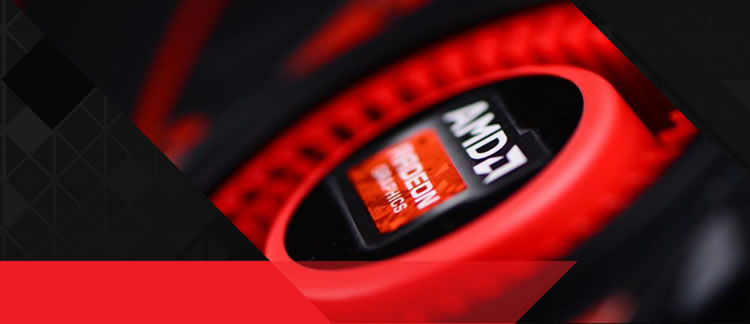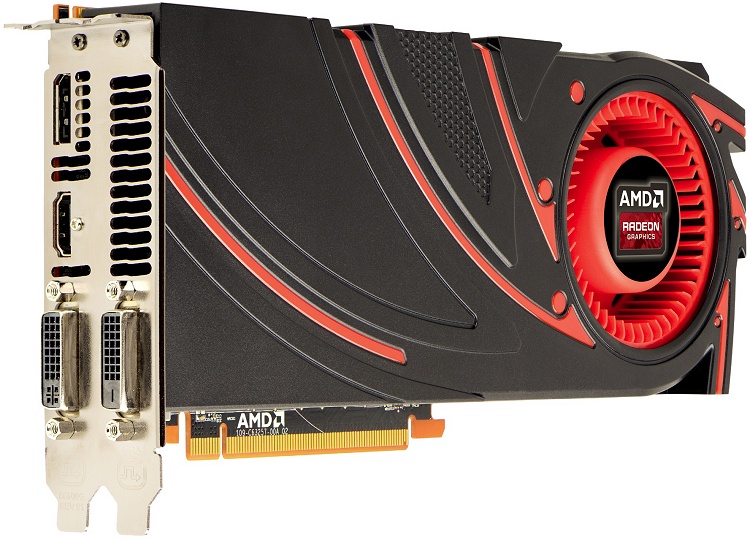AMD announced the next generation Volcanic Islands GPUs last month at their GPU14 Tech Day event in Hawaii. There were a couple of exciting announcements: a widely expected new flagship GPU, the R9-290X, that is meant to compete with Nvidia's GTX Titan, and there was also "Mantle," a new open-source API that at least on paper sounds like a great way to optimize games for the PC platform – the fact that AMD is also powering Xbox One and PS4 graphics adds credibility to AMD's announcement, of course.
Unfortunately, we are not going to talk about either of those things today since the day hasn't come yet. We will get you up to speed about new Radeon graphics cards outside the R9 290X, however. AMD has done away with the Radeon 'HD' naming scheme that they have used for the past 6 years and replaced it with something a bit more complex.
Previous years have seen the release of a new GPU generation every year which makes the Radeon HD 7000's shelf life surprising, even more so considering the majority of the new RX 200 series cards rebadges from existing HD 7000 products. The RX 200 series will consist of the Radeon R7 240, R7 250, R7 260X, R9 270X, R9 280X and later this month the R9 290 and R9 290X. Confused yet? Well let us try and clear a few things up.
| GPU | Code-name | Price | Equivalent GPU* | Equivalent price at launch |
| Radeon R9 290X | Hawaii XT | ??? | -- | -- |
| Radeon R9 290 | Hawaii Pro | ??? | -- | -- |
| Radeon R9 280X | Tahiti XT | $299 | Radeon HD 7970 GHz | $499 |
| Radeon R9 270X | Tahiti LE | $199+ | Radeon HD 7870 | $349 |
| Radeon R7 260X | Bonaire XTX | $139 | Radeon HD 7790 | $149 |
| Radeon R7 250 | Oland XT | $89 | Radeon HD 8670/7730 | *OEM |
| Radeon R7 240 | Oland Pro | Radeon HD 8570/7510 | *OEM |
The Radeon R7 240 is an overclocked version of the Radeon HD 7510 which was an OEM only part. The R7 250 is a new product that sits between the HD 7510 and HD 7570 (another OEM only part). Both are much slower than the Radeon HD 7750, so these shouldn't be considered as gaming options.
The R7 260X is a rebadged Radeon HD 7790 that has been overclocked, with cards running at 1.1GHz opposed to 1GHz. Jumping up in speed we have the R9 270X which is a rebadged Radeon HD 7870 (more about these two in a second). Finally, the R9 280X which we'll eventually retest looks to be a direct copy of the Radeon HD 7970 GHz Edition.
So with almost nothing new to see here, what's the point?
The specifications point to rehashed 7000 series parts and, well, so does the pricing. AMD has set the R9 280X at $300, the same price you can get 1GHz 7970 cards for, while the R9 270X is priced at $200, the exact same price as heavily overclocked 7870s. Meanwhile the R7 260X (rebadged HD 7790) will cost $140, while overclocked HD 7790 cards are currently selling for as little as $120.
Therefore it looks like we'll have to wait for the R9 290 series before we see anything truly new from AMD. Although we tend to keep you updated on how GPUs perform with the latest game releases, let this review serve as a guide if you're buying a mid-range GPU today and don't care to bother to read old reviews with old name schemes, and perhaps most importantly, older drivers and obsolete price points.
AMD Radeon R9 270X
The Radeon R9 270X, which has been given the codename 'Curacao XT', uses the 28nm design process comprised of 2800 million transistors in a 212mm2 die. Sound familiar? Well the Radeon HD 7870 GHz Edition, which was codenamed 'Pitcairn XT', also used the 28nm process and featured 2800 million transistors in a 212mm2 die.
The core configuration of the Radeon HD 7870 allowed for 1280 SPU's, 80 TAU's and 32 ROP's and this is the exact same configuration used by the R9 270X.
Where AMD has made some changes is in the core and memory clock speeds. The 7870 ran a core speed of 1GHz without a boost feature and a memory frequency of 4800MHz, the R9 270X is a bit faster. The standard operating specifications see a core clock speed of 1.05GHz (5% higher) with a memory frequency of 5.6GHz, 17% greater.
While the memory is faster, the R9 270X still uses a 256-bit wide memory bus and by default comes with a 2GB memory buffer, though 4GB will be an option on some cards despite being pointless for this GPU.
The TDP rating is 180 watt which is slightly higher than the 175 watt rating of the 7870. Perhaps the most significant changes have been made to the API support which sees the R9 270X support DirectX 11.2 along with AMD's Mantle. Pricing is set at $200 which matches the current retail value of a Radeon HD 7870 graphics card, so not a lot to get excited about here.
AMD Radeon R7 260X
The R7 260X is a budget card, though for some reason the new flamboyant name seems to suggest otherwise to us. Codenamed 'Bonaire XTX', it is an updated version of the 'Bonaire XT' aka Radeon HD 7790. Like the Radeon HD 7790 the R7 260X features the same 896 SPU's, 56 TAU's and 16 ROP's, all of which fit in the same 160mm2 die area.
Again what we have here is an overclocked card which operates at 1.1GHz opposed to the 1GHz clock speed of the 7790. The memory has also been boosted from 6.0GHz to 6.5GHz. The end result is a core overclock of 10% and a memory overclock of 8%.
This has increased the TDP rating to 115 watts from 85 watts, a 35% increase in load consumption according to AMD's figures. Despite the increased power consumption the card still only requires a single 6-pin PCIe power connector.
Like the R9 270X the R7 260X also received updated API support for DirectX 11.2 along with Mantle.




